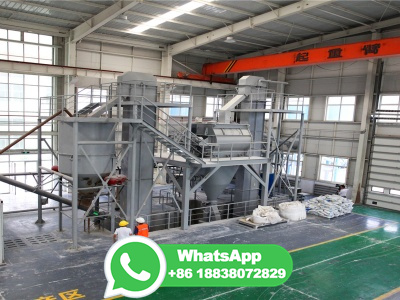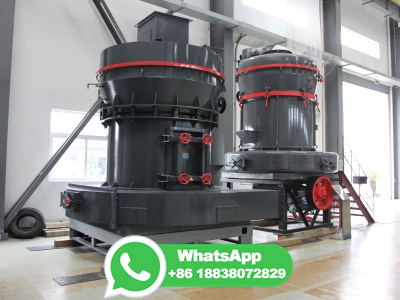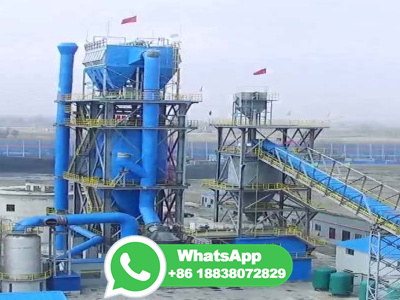
Underground Coal Gasification (UCG) takes advantage of the same chemical reactions of coal to produce product gases, as those occurring in conventional gasifier reactors. The main difference is that in UCG the underground coal seam itself becomes the reactor, so that the gasification of the coal takes place underground instead of in a manufactured gasification vessel at the Obviously ...
WhatsApp: +86 18037808511
Catalytic Gasification. Catalysts are commonly used in the chemical and petroleum industries to increase reaction rates, sometimes making certain previously unachievable products possible. Acids, through donated protons (H+), are common reaction catalysts, especially in organic chemistry (catalysts take part in the reaction but are not consumed).
WhatsApp: +86 18037808511
Coal Gasification Combined Power Generation plant with CO 2 recovery in order to increase the cycle efficiency and mitigate CO 2 emission and other pollutants. The results indicate that the entrained flow gasifier is the dominant one. Keywords: Syngas; Coal gasification; Cold gas efficiency; Coal conversion efficiency; Gasifiers ISSN:
WhatsApp: +86 18037808511
Gasification is a technological process that can convert any carbonaceous (carbonbased) raw material such as coal into fuel gas, also known as synthesis gas (syngas for short). Gasification occurs in a gasifier, generally a high temperature/pressure vessel where oxygen (or air) and steam are directly contacted with the coal or other feed material causing a series of chemical reactions to ...
WhatsApp: +86 18037808511
Gasification is the process of converting organic materials (anything containing carbon) into a gas form known as Syngas or Producer Gas. Gasification has been around for hundreds of years. Initially developed to produce town gas for lighting and cooking in the 1800s, this was replaced by electricity and natural gas. ...
WhatsApp: +86 18037808511
Coal utilization Gasification: While the goal of combustion is to produce the maximum amount of heat possible by oxidizing all the combustible material, the goal of gasification is to convert most of the combustible solids into combustible gases such as carbon monoxide, hydrogen, and methane. During gasification, coal initially undergoes devolatilization, and the residual char undergoes some ...
WhatsApp: +86 18037808511
Gasification is an indirect combustion of solid and liquid biomass by converting them to combustive syngas. Gasification is an alternative process for the traditional combustion, in which the emission of dust and toxic gases can be minimized. In this chapter, a comparison of these two biomasstoheat conversion processes applied on biomass is presented in term of environmental impacts and ...
WhatsApp: +86 18037808511
Gasification One means of converting coal to an alternate form of energy is gasification. In this process, coal is combined with oxygen and steam to produce a combustible gas, waste gases, char, and ash. The more than 70 coal gasification systems available or being developed in 1979 can be classified by
WhatsApp: +86 18037808511
Biomass gasification is a mature technology pathway that uses a controlled process involving heat, steam, and oxygen to convert biomass to hydrogen and other products, without combustion. Because growing biomass removes carbon dioxide from the atmosphere, the net carbon emissions of this method can be low, especially if coupled with carbon ...
WhatsApp: +86 18037808511
Gasification is a process that has many benefits and uses. It is a reliable technology that can be used to produce transportation fuels, electricity, and chemicals. Gasification is also environmentally and economically advantageous. It is a process that should be considered when looking for ways to recycle or dispose of waste.
WhatsApp: +86 18037808511
Underground coal gasification (UCG) is a gasification process used to produce gas from coal in situ by injecting air or oxygen into nonmined coal seams and extracting the product gas via surface wells. The resulting synthetic gas ("syngas") can be used to produce electricity, as well as chemicals, liquid fuels, hydrogen and synthetic natural gas.
WhatsApp: +86 18037808511
Library. Entrained Flow Gasifiers. In entrainedflow gasifiers, fine coal feed and the oxidant (air or oxygen) and/or steam are fed cocurrently to the gasifier. This results in the oxidant and steam surrounding or entraining the coal particles as they flow through the gasifier in a dense cloud. Entrainedflow gasifiers operate at high ...
WhatsApp: +86 18037808511
The process is known as gasification, a set of chemical reactions that uses limited oxygen to convert a carboncontaining feedstock into a synthetic gas, or syngas. It sounds like combustion, but it's not. Combustion uses an abundance of oxygen to produce heat and light by burning.
WhatsApp: +86 18037808511
Coal Biological Conversion Technology. The Department of Energy supported development of coal bioconversion in the 1980s1990s, by providing funding for RD performed by Arctech Inc. of Chantilly, ia. Arctech discovered and has patented a multistep process for bioconversion of coal (lignites, subbituminous, and bituminous coals have ...
WhatsApp: +86 18037808511
Coal liquefaction is a process of converting coal into liquid hydrocarbons: liquid fuels and process is often known as "Coal to X" or "Carbon to X", where X can be many different hydrocarbonbased products. However, the most common process chain is "Coal to Liquid Fuels" (CTL).
WhatsApp: +86 18037808511
The Department of Energy explains that coal gasification is a thermochemical process in which the gasifier's heat and pressure break down coal into its chemical constituents. The resulting "syngas" is comprised primarily of carbon monoxide and hydrogen, and occasionally other gaseous compounds. Proponents of coal gasification say that ...
WhatsApp: +86 18037808511
Gasification of coal in a bath of molten sodium carbonate through which steam is passed is the basis of the Kellogg Coal Gasification process. The bath of moiten salt strongly catalyzes the basic ...
WhatsApp: +86 18037808511
Coal gasification is the process of producing syngascontaining carbon monoxide, carbon dioxide, natural gas, and hydrogen from coal. This method of generating hydrogen, classified as brown/black, places the largest strain on the environment. The main use of syngas is to produce power by combustion.
WhatsApp: +86 18037808511
Pyrolysis is considered the first step in the processes of gasification or combustion. The process is used heavily in the chemical industry, for example, to produce ethylene, many forms of carbon, and other chemicals from petroleum, coal, and even wood, or to produce coke from coal.
WhatsApp: +86 18037808511
Cogasification (COG) is a cleancoal technology that uses a binary blend of coal and biomass for generating the product gas; it is environmentfriendly since it emits lesser quantities of pollutants compared to the coal gasification process. Although coals found in many countries contain high percentages of ash, cogasification studies involving such coals, and the process modeling thereof ...
WhatsApp: +86 18037808511
Coal gasification. In industrial chemistry, coal gasification is the process of producing syngas —a mixture consisting primarily of carbon monoxide (CO), hydrogen ( H2 ), carbon dioxide ( CO2 ), methane ( CH4 ), and water vapour ( H2O )—from coal and water, air and/or oxygen. Historically, coal was gasified to produce coal gas, also known ...
WhatsApp: +86 18037808511
Slag Utilization. Uses a better byproduct with significant technical benefits (such as uniformity) Helps the economic competitiveness of coal, in general, and integrated gasification combined cycle (IGCC) processes in particular. The interest in using slag is largely driven by the avoided landfill cost 1.
WhatsApp: +86 18037808511
Coal is typically fed into a pressurized gasifier either pneumatically as a dry solid or pumped as coalwater slurry. Slurryfed feed systems have a lower capital cost, but result in less efficient conversion of coal to syngas (referred to as the "cold gas efficiency" of the gasifier).
WhatsApp: +86 18037808511
Syngas, or synthesis gas, is a mixture of hydrogen and carbon monoxide, in various gas often contains some carbon dioxide and is principally used for producing ammonia or is combustible and can be used as a fuel. Historically, it has been used as a replacement for gasoline, when gasoline supply has been limited; for example, wood gas was used to power cars ...
WhatsApp: +86 18037808511
Similarly, tar content associated with the cogasification process is found to be decreased with an increase in temperature. Another significant improving result from cogasification is the decrement of CO 2 with an increase in temperature. Seo et al. (2010) used the sawdust and Indonesian coal mixture for gasification and cogasification in the ...
WhatsApp: +86 18037808511
Syngas is the mixture of carbon monoxide (CO) and hydrogen (H2) that has comprehensive utilization. Historically, Light and Coke Company has been recognized as the first commercial user of syngas in 1812. However, initially, the syngas was produced by the coal gasification process only.
WhatsApp: +86 18037808511
Hydrogasification Hydrogasification is gasification in a hydrogenrich has been used since the 1930s primarily for the production of synthetic natural gas (SNG) from coal or other carbonaceous variation on this technique is called steam hydrogasification which uses both steam and hydrogen for gasification.
WhatsApp: +86 18037808511
The syngas composition depends significantly, as show in Tables 6, 7, and 8, on the gasification process and the coal rank. Each gasification technology has its own gasifier design with a specific chemical reaction and operating conditions. Coals have different constituents and chemical and physical properties.
WhatsApp: +86 18037808511
the three gasification processes used in coal‐to‐SNG. The proven and commercialized method of gasification for the coal‐to‐ SNG process, however, is the steam‐oxygen gasification process. Steam‐oxygen gasification In the steam‐oxygen process of converting coal
WhatsApp: +86 18037808511
Gasification is a process that uses heat, pressure, and steam to convert materials directly into a gas composed primarily of carbon monoxide and hydrogen. Gasification technologies differ in many aspects but rely on four key engineering factors: •. Gasification reactor atmosphere (level of oxygen or air content); •.
WhatsApp: +86 18037808511
The gasification can be carried out directly by adding oxygen (or air) and by exploiting the exothermicity of the reactions to provide the energy necessary for the process or by pyrolysis, supplying heat from outside in the complete absence of oxygen. The gaseous products, essentially hydrogen, carbon monoxide, methane and carbon dioxide, may ...
WhatsApp: +86 18037808511
gasifier. (Show more) coal gasification, any process of converting coal into gas for use in illuminating and heating. The first illuminating gas was manufactured from coal in England in the late 18th century by the process of carbonization or destructive distillation, heating coal in the absence of air, leaving a residue of coke as a byproduct.
WhatsApp: +86 18037808511
The meaning of GASIFICATION is conversion into gas; especially : conversion of coal into natural gas.
WhatsApp: +86 18037808511
The Lurgi gasifier is a pressurized, dryash, moving bed gasifier that produces syngas from lump coal, steam, and oxygen as an oxidant. A high ratio of steam to oxygen helps moderate the temperature such that the ash does not melt, but rather is removed as dry ash. More reactive feedstocks are preferred due to the relatively lowtemperature ...
WhatsApp: +86 18037808511